Advanced Workflow Block Parameters
Advanced Workflow Block Parameters
Fill the advanced parameters in the following cases:
- When using custom event parameters
- For sending messages to an additional contact
- For inserting dynamic content
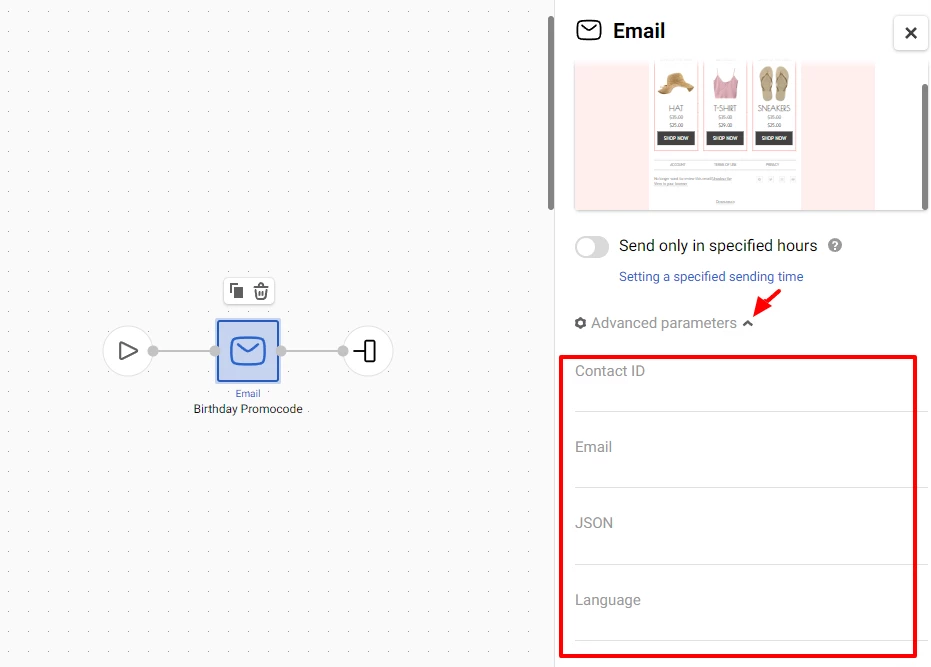
List of Additional parameters:
Parameter | Description |
|---|---|
Contact ID | Contact identifier in the system or an event parameter containing it. |
Contact's email address or an event parameter containing the email address. | |
Phone | Contact's phone number or an event parameter containing it. |
Token | Contact's token or an event parameter containing it. |
Language | Message language. Leave the field blank if you use a multilingual message in the workflow. |
JSON | Specific data from the event. |
Let's view each case of parameter configuration in detail.
Using Custom Event Parameters
By default, when starting a workflow, the event should pass standard parameters for contact identification:
Event parameters | Identifiers |
|---|---|
ContactId Contact_id | Contact ID |
externalCustomerId | External ID |
Email | |
Phone | Phone number |
PushToken | Contact token |
Important
The primary identifier is ContactId. If it is not specified but at least one of the other identifiers is provided, ContactId will be automatically added to the event.
To start workflows, the system identifies the contact for which the event was received. The system searches for the contact using the following rules:
Contact ID has the highest priority among all parameters.
Entered contact email, phone number, or token are used for sending.
If externalCustomerId is specified, the message is sent to the contact it belongs to; among those contacts that were found by email address, phone number or token.
If externalCustomerId is not specified, the message is sent to the contact found by email address, phone number or token.
If a contact is not found, a new contact will be created for sending.
- For data consistency, provide parameter names according to the specified list.
If the parameters in the event don't match the standard values, such as using PersonalEmail instead of EmailAddress, like on the screen below
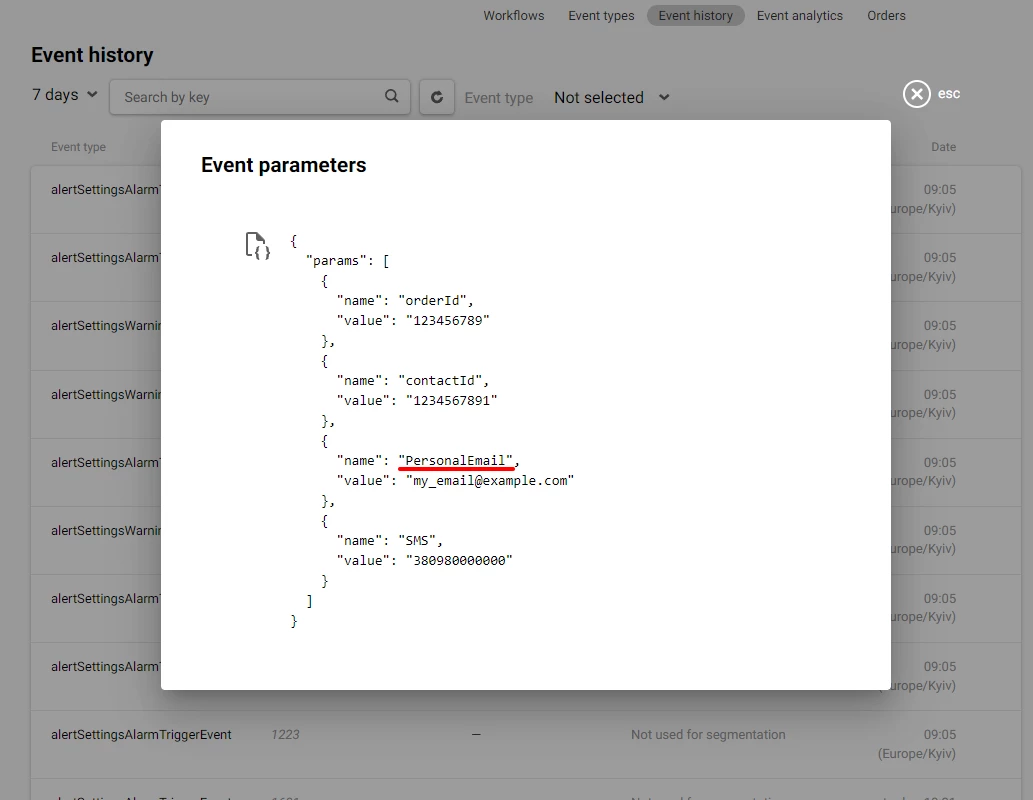
In this case, specify the name of the corresponding variable in the Email field.
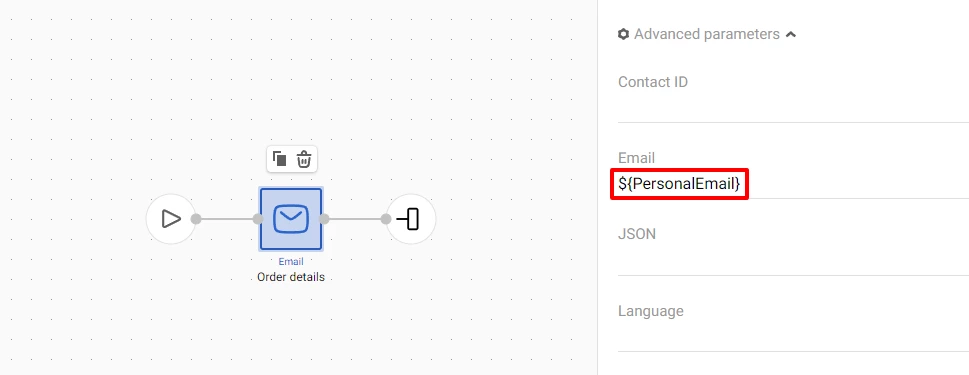
Sending Messages to an Additional Contact
For example, if you need to duplicate the message sent to the user and send it to the manager.
Copy the block with the selected message in the workflow and specify the manager's contacts in the advanced parameters.
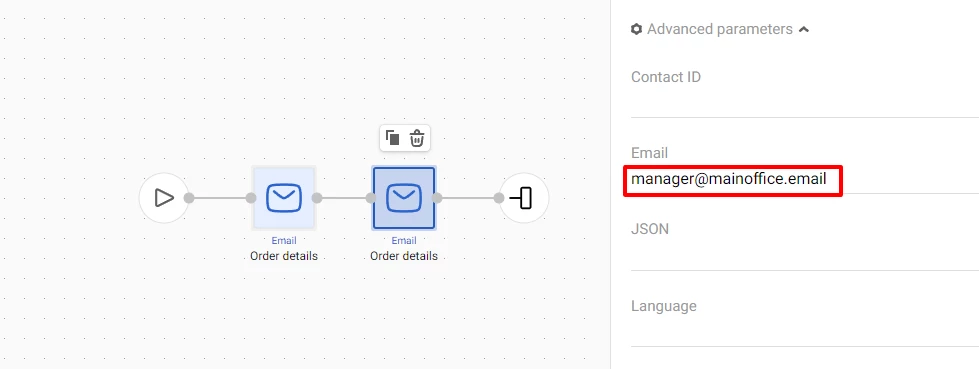
Inserting Dynamic Content
Used to display specific data from the event in the message.
For example, if the event contains JSON:
{
"eventTypeKey": "AbandonedCart",
"keyValue": "2424925572",
"params": [
{
"name": "cartItems",
"value": [
{
"name": "Conditioner for dry hair",
"price": "341",
"url": "https://site.com/conditioner-dry-hair",
"imageurl": "https://site.com/uploads/product/big/20161122/20161122_7zvb.jpg",
"brand": "Le Petit Olivier",
"tags_weight": "200",
"tags_oldprice": "467"
},
{
"name": "Magnolia Nobile Perfumed water",
"price": "2341",
"url": "https://site.com/catalog/perfumed-water-2-750-g",
"imageurl": "https://site.com/uploads/product/big/20161122/20161122_7zvb.jpg",
"brand": "Acqua Di Parma",
"tags_weight": "100",
"tags_oldprice": "4467"
}
]
},
{
"name": "recommendedItems",
"value": [
{
"name": "Shampoo for dry hair",
"price": "441",
"url": "https://site.com/shampoo-dry-hair",
"imageurl": "https://site.com/uploads/product/big/20161122/20161122_7zvb.jpg",
"brand": "Le Petit Olivier",
"tags_weight": "200",
"tags_oldprice": "467"
},
{
"name": "Magnolia Nobile Face cream",
"price": "1341",
"url": "https://site.com/catalog/face-cream-2-750-g",
"imageurl": "https://site.com/uploads/product/big/20161122/20161122_7zvb.jpg",
"brand": "Acqua Di Parma",
"tags_weight": "100",
"tags_oldprice": "4467"
}
]
},
{
"name": "emailAddress",
"value": site@ukr.net
}
]
}where:
- name – array and field names,
- value – the value to be inserted into the message.
In the message, specify the variables that will display the products in the message:
- $!data.get('recommendedItems') — The name of the array from which the data needs to be substituted is given in brackets.
- get(0) — The index of the array elements is indicated in brackets (counting starts from 0);
- get('price') — the name of the event parameter from which data should be substituted is given in brackets.
As a result, the variable might look like this:
$!data.get('recommendedItems').get(0).get('price')
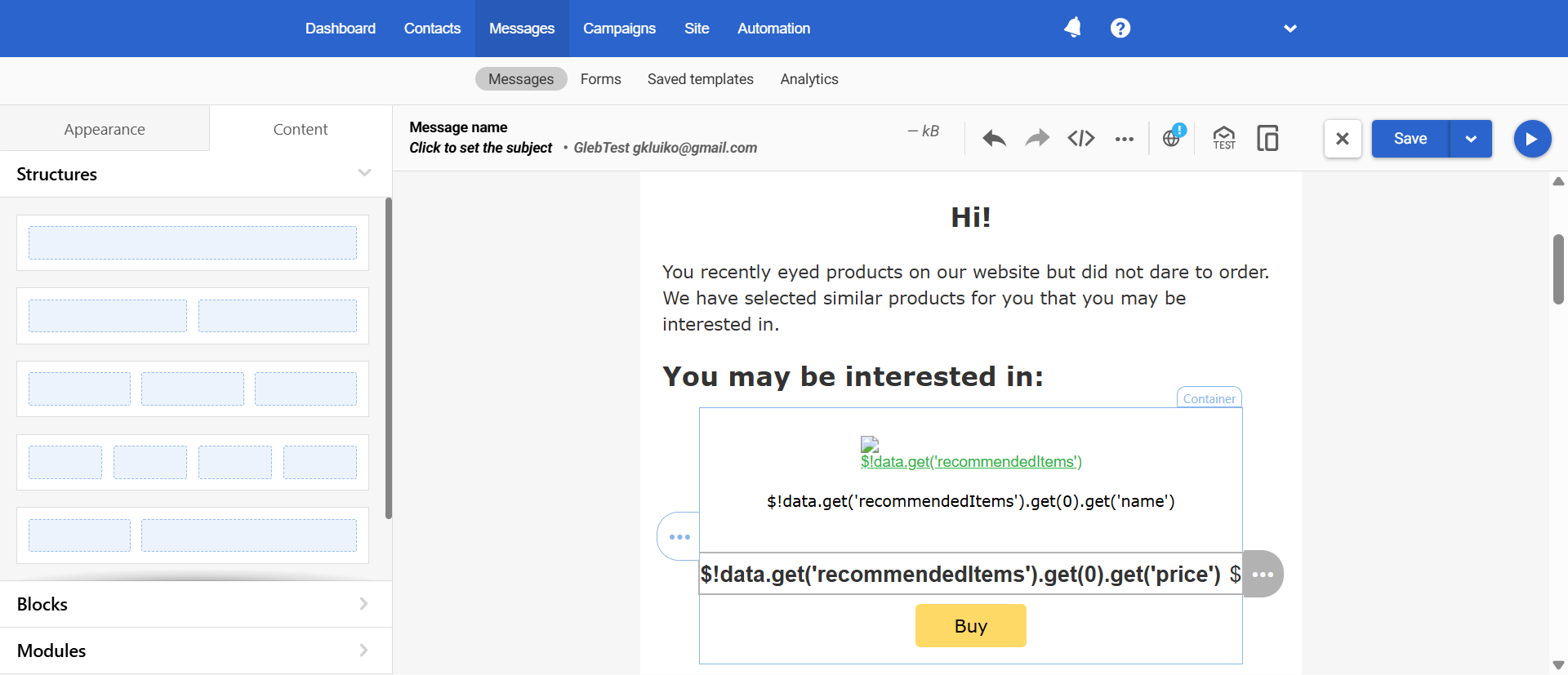
Updated 4 days ago
